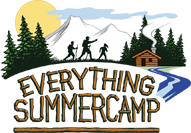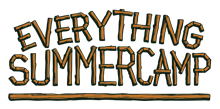
Hey there, Sweet Tooths! (or is it Sweet Teeth?)
A crackling fire on a starry summer night and laughter all around. Who could ask for more? …except for maybe some tasty s’mores with that melted, mouth-watering chocolate bar sandwiched between graham crackers and gooey marshmallows! As we celebrate National Chocolate Day today, let's revel in the versatility of this decadent delight that adds a touch of sweetness to the summer camp life!
Indulgent, irresistible, and loved by all, chocolate holds a special place in the hearts of summer campers and dessert enthusiasts the world over. Its versatility knows no bounds, whether it takes the form of a solid bar, a drizzle, or a velvety stream cascading into a steaming cup of cocoa. Chocolate offers a world of possibilities.
The Journey of the Chocolate Bar

From the humble cacao tree to the mouth-watering candy chocolate bar, each step in the chocolate-making process plays a crucial role in creating the delightful treat we all love. It's a journey that blends science, craftsmanship, and a touch of magic to bring us the joy and indulgence of chocolate in all its delectable forms.
Harvesting
The journey of the chocolate bar begins with harvesting ripe cacao pods from the cacao tree. These football-shaped pods contain cocoa beans—the primary ingredient in chocolate. Using machetes or specialized tools, harvesters carefully cut the pods from the trees.
Fermentation
The harvested pods are then opened and the cocoa beans, surrounded by a sweet and tangy pulp, are extracted. The beans and pulp are placed in large, covered piles and left to ferment for a few days. This is a crucial step to enhance the flavor by breaking down the pulp, triggering chemical changes.

Drying
After fermentation, the beans are spread out on large trays to dry under the sun. Drying the beans reduces moisture and prepares the beans for further processing. It also contributes to the development of flavor characteristics in the cocoa beans.
Roasting
The dried cocoa beans are carefully roasted to bring out their rich flavors and aromas. Depending on the desired flavor profile, the roasting process will vary. This process removes any residual moisture and develop that characteristic taste of chocolate we all know and love.

Grinding
The roasted cocoa beans are ground into a paste called cocoa liquor. This process involves grinding the beans into a fine powder. Continuing to grind, it eventually transforms into a smooth liquid as the grinding process generates heat which melts the cocoa butter and coats the powder specks.

Refining
The cocoa liquor is further refined to reduce the particle size for a super smooth consistency. This process involves passing the cocoa liquor through machinery like refining mills or conching machines. They grind away and smooth out the particles, ensuring a fine texture and uniform chocolate quality.
Tempering
This step involves careful heating and cooling of the chocolate to specific temperatures. This process ensures the cocoa butter crystallizes in a stable form, giving the chocolate its desirable glossy appearance, snap, and smooth texture!

Molding
Once the chocolate has been tempered, it gets poured into molds where it finds its final shape as a candy bar, a chocolate chip, or any other desired form. The molds are then cooled to allow the chocolate to solidify and retain its shape.
Packaging
After the chocolate’s cooled and solidified, it’s removed from the molds and prepped for packaging. The bars get wrapped in foil or other materials to protect them from moisture and ensure freshness. They are then labeled and ready for distribution to be enjoyed by chocolate lovers around the world.
Whether we enjoy a chocolate bar during a s'mores session at camp or savor it in other delightful forms, chocolate has the power to uplift our spirits and create moments of pure delight. So let’s honor National Chocolate Day. Grab your favorite chocolate treat, gather around the bonfire, and savor the magic of National Chocolate Day. Thanks for reading, Everybody. And, as always, Happy Camping!
- John







